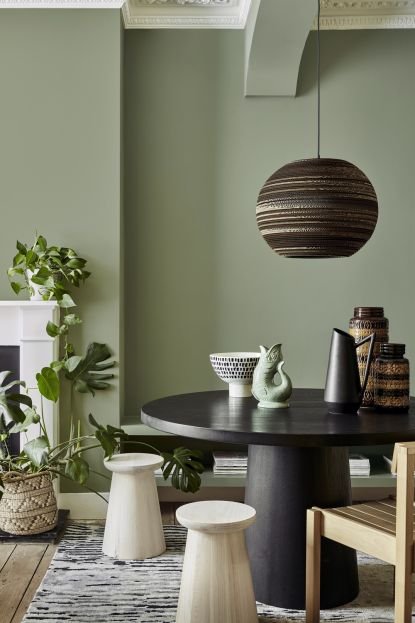Your basket is currently empty!
The Power of Color: Using Palette Selection to Transform Spaces
Color is a powerful tool in the hands of architects and designers, capable of transforming spaces and evoking emotions. The careful selection and application of a color palette can create an atmosphere, define the character of a space, and influence the way people perceive and interact with their environment. This article explores the profound impact of color in design, showcasing how architects and designers utilize palette selection to breathe life into spaces, express concepts, and create memorable experiences. By understanding the psychology of color and its application in design, we can harness its transformative power to shape our surroundings and enhance our daily lives.

Color Psychology: Evoking Emotions and Setting the Mood
Colors have the remarkable ability to evoke specific emotions and set the mood in a space. Warm colors like red and orange can create a sense of energy, passion, and warmth, while cool colors like blue and green evoke calmness, tranquility, and serenity. The careful selection and combination of colors allow designers to influence the atmosphere and emotional response within a space, whether it’s a vibrant and energetic environment or a serene and peaceful oasis.
Creating Visual Interest: Balancing Boldness and Restraint
Color palettes can be used to create visual interest and focal points within a space. Designers often play with contrasting colors or complementary hues to draw attention to specific architectural features or design elements. The strategic use of bold colors as accents or focal points adds visual excitement and creates a sense of dynamism. However, a balanced approach is crucial to avoid overwhelming the space, and restraint in color selection can help maintain visual harmony and prevent sensory overload.
Enhancing Spatial Perception: Creating Depth and Dimension
Color plays a significant role in enhancing the perception of space and creating a sense of depth and dimension. Lighter colors tend to make spaces feel more expansive and open, while darker colors can create a sense of intimacy and coziness. Through the careful application of color, designers can manipulate the perception of space, accentuate architectural features, and guide the flow of movement within a space. The use of color transitions or gradients can also add visual interest and create a sense of continuity between different areas.
Cultural Symbolism and Identity: Expressing Concepts and Values
Color can serve as a powerful tool for expressing cultural symbolism and identity. Different cultures attach specific meanings and symbolism to colors, and designers can leverage this to convey concepts, values, or narratives within a space. Whether it’s using vibrant colors to celebrate cultural heritage or incorporating subdued tones to evoke a sense of tradition, the thoughtful selection of colors allows designers to communicate ideas and create spaces that resonate with their intended audience.
Adapting to Purpose and Function: Tailoring Color for Specific Spaces
Color palettes should be tailored to the purpose and function of a space. Designers consider the intended activities, user preferences, and the psychological impact of colors when selecting palettes. For example, calming colors may be suitable for a spa or healthcare setting, while vibrant and energetic hues may be more appropriate for recreational spaces. By understanding the unique requirements of each space, designers can curate color schemes that enhance functionality, support intended activities, and contribute to a positive user experience.
Color is a powerful tool that can transform spaces, evoke emotions, and shape our experiences within the built environment. Through an understanding of color psychology, visual interest, spatial perception, cultural symbolism, and adaptation to purpose, architects and designers can leverage the transformative power of color to create memorable, engaging, and impactful spaces. Whether it’s setting a mood, creating visual focal points, enhancing spatial perception, expressing cultural identity, or tailoring colors to specific functions, the careful selection and application of color palettes have the potential to elevate the quality of our surroundings and enhance our well-being. By harnessing the power of color, we can create spaces that resonate with us, inspire us, and enrich our daily lives.
Leave a Reply